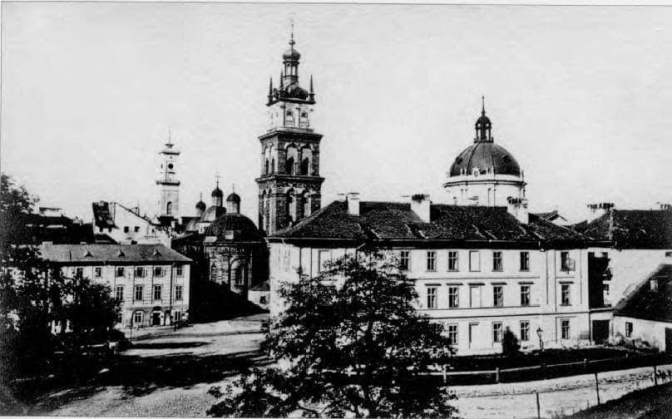
[For urgent updates please follow Ukrainian Freedom News on Telegram]
By Petro Radkovets, Lviv historian
Today, I want to narrate about Ruska street. Scientists have obviously written volumes of papers and historical investigations about it, so I will tell my own impression and present my own memories of this island of history in the stormy waves of events in the city.
Back in the 13th-early 14th centuries, when the city was located around the Old Market Square, and later, when it moved around the Market Square (14th-18th centuries), the local residents mostly settled in compact national communities. Of course, in the XIX century, this principle went away, but it left traces in street names. Namely, Lviv has Virmenska (Armenian), Serbska (Serbian; once called Shkotska or Scottish), Zhydivska (now Staroevreyska, or Old Jewish), and Ruska streets. We will talk about the latter.
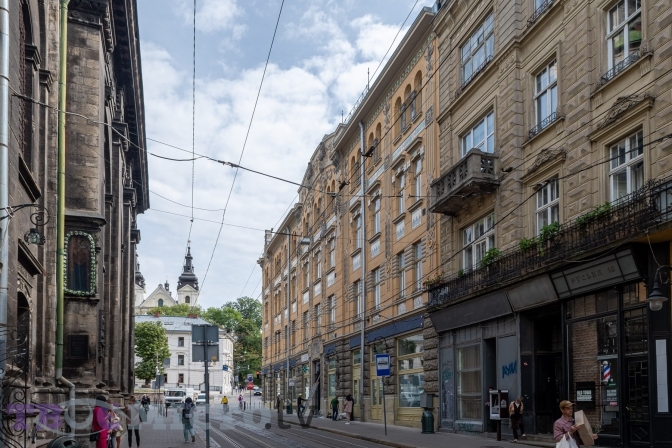
Read also: Why Poltva river disappeared in the centre of Lviv, and how the city got rid of Lenin. Local history
In Lviv, Ruska Street appeared many centuries earlier than the word «Russia» appeared on the map of Europe. These are different concepts and should not be confused. It was first mentioned in 1414 as Solyanykiv Street. In 1472, the name Ruska appeared. During the German occupation, it was called Reussenstrasse, and from the summer of 1944 – Ruska street again.
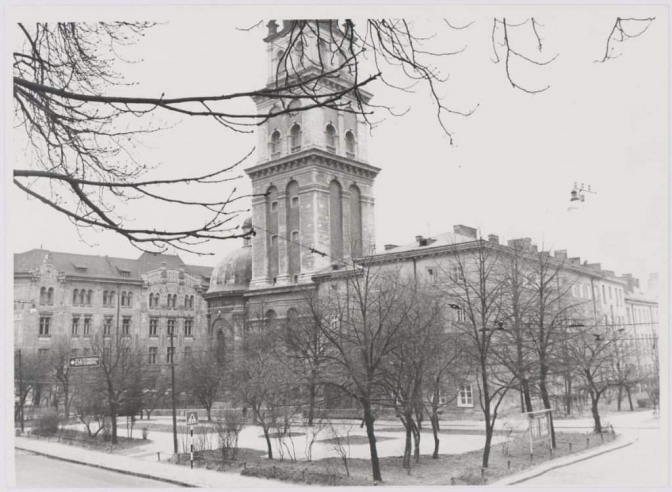
The square in front of the Church of the Assumption
If you go to the courtyard of the Dormition Stauropegion Brotherhood today (location), you can meet mostly tourists or churchgoers. But during my childhood, many children played here, and mothers’ voices were heard calling them to dinner. On religious holidays, the teacher of my native school №8 stood at the door and kept a watchful eye to see if any of the students would come to church with their parents [in Soviet times, visiting the church was strongly discouraged by the state]. Despite this, a catechetical school operated on the Kornyakt tower. I found out about it later.

Ruska Street until 1904 before the construction of the «Dniester Mutual Insurance Company»
I really liked the building of a polyclinic. We called it like that, because the great story connected with this building was not popularized in those days. When I went to the second floor, I couldn’t understand why the sign «Cashier» was written on the glass in front of the register.
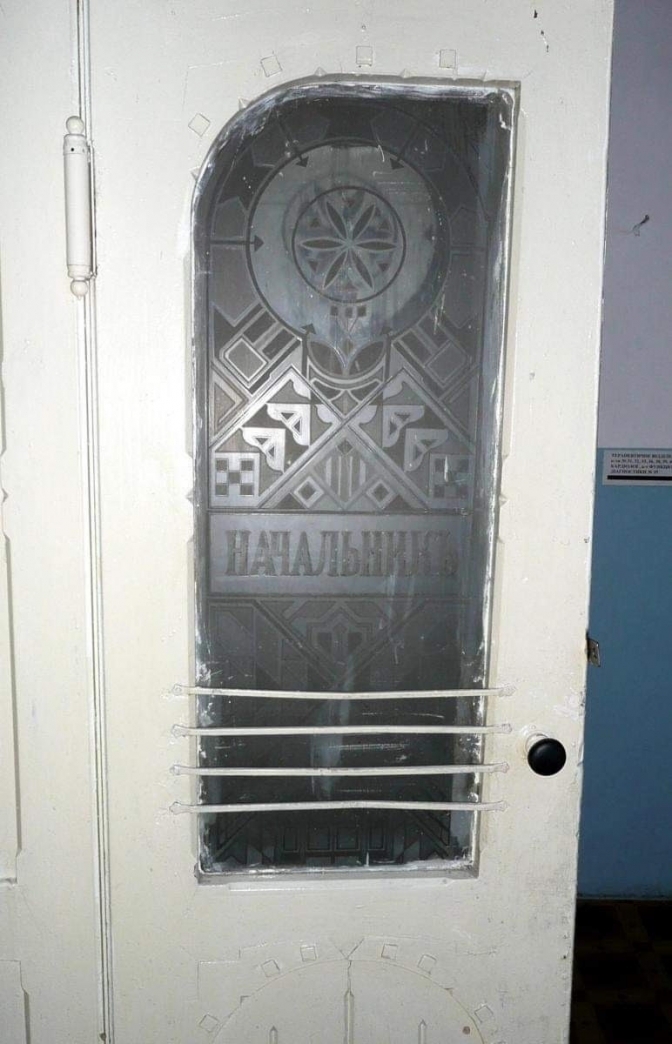
A door with an inscription in front of the register
Only later did I learn about the building of the Dniester Mutual Insurance Society (location). The service used to be called «security», and now we call it «insurance».
Read also: Scaffolding removal reveals one of the city’s most stunning facades
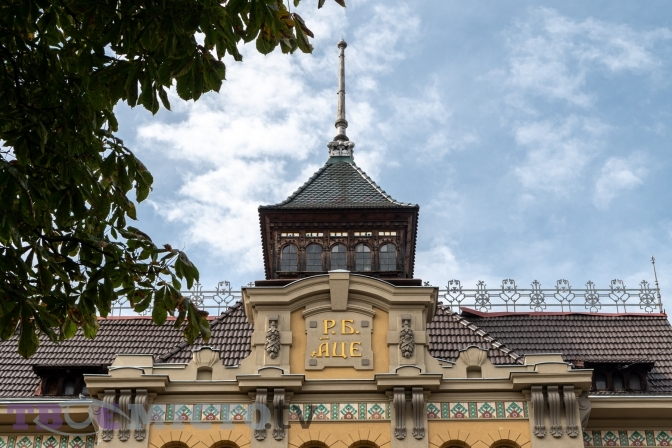
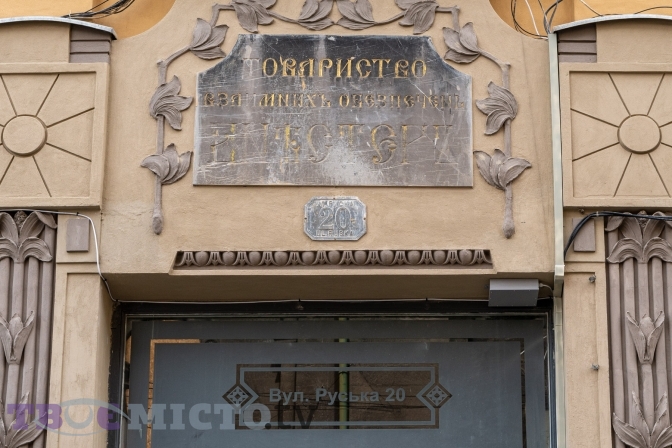
The house was built in 1905-1906 on the site of three tenement houses of the 17th-early 19th centuries, which were demolished in 1904. The construction work was carried out by Ivan Levynskyi’s firm, after the competition held before the construction. The first prize was awarded to A. Zakharevych, but his proposal, like the original project of Levynskyi’s workshop, was not accepted.
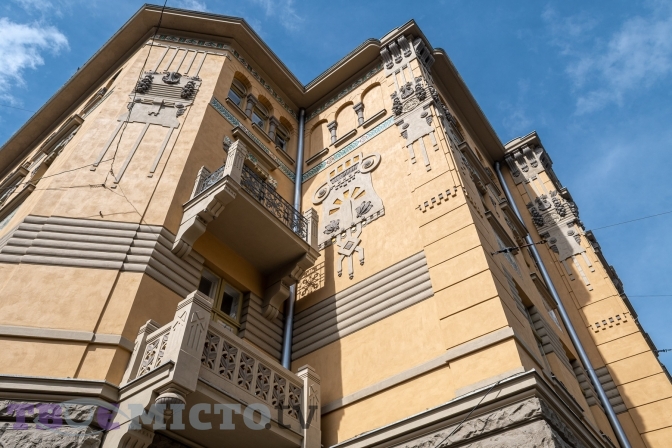
The building of the former insurance company «Dniester», located on the street Ruska, 20
The house became the embodiment of the Ukrainian Secession style. The building is richly decorated. It can be compared with a wooden box that came out from under the cutter of a folk craftsman.
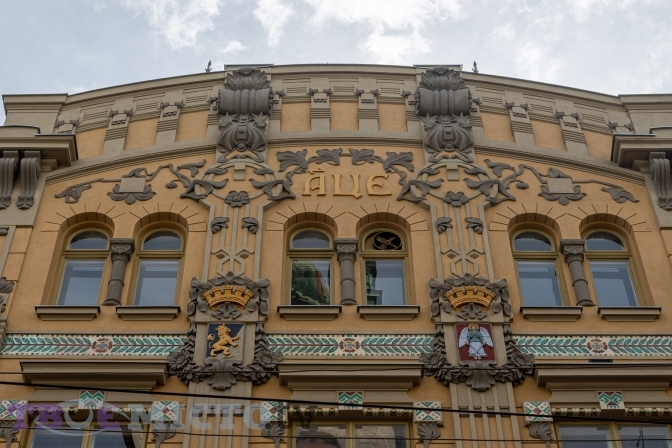
The building of the former insurance company «Dniester», located on the street Ruska, 20
The building was divided according to its functional purpose. The wing facing Pidvalna Street was intended for housing for employees and staff. And the wing on the side of Ruska Street was designed for offices. It should also be noted that the hall of the «Sokil» sports association was located on the ground floor (now, it’s the 1st floor), and Les Kurbas, a famous Ukrainian director, performed on the stage of the hall in 1909 as part of his amateur theatre.
There are inscriptions on the two facades, which I could not understand at all when studying at the school opposite to it. When I asked adults, I didn’t get an answer either. Only later did he learn that the inscriptions mean the date of construction of the building «The Year of God 1905».
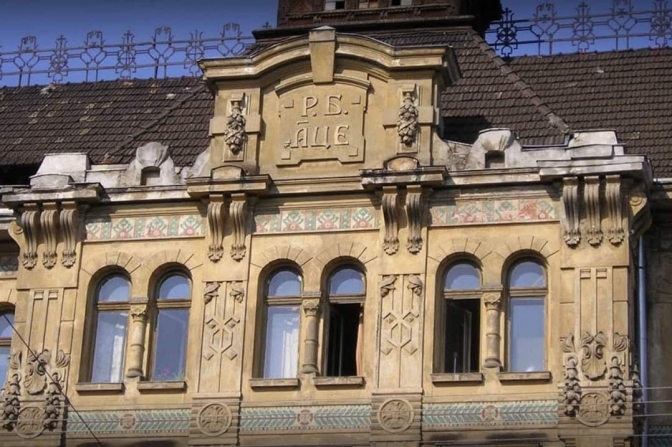
The building of the former insurance company «Dniester», located on the street Ruska, 20
I also want to mention my favourite store «Promin». This is a bookstore in the premises where the «Yunyi Technik» store is now located right near Rynok square. I remember how my father used to buy me books with bright covers. Later, I came here myself to buy some new book.
A visit to the barbershop was a special procedure. It was located on the corner of Ruska and Ivana Fedorova streets. It opened early, because men could shave here before work. It may seem quite strange now, but men shaved mostly not at home, but in a barbershop. That’s what «Danger Razor» was for.
So, the procedure looked like this: the master (hairdressers were mostly men) moistened the face, applied thick soap foam, which was then shaved together with the bristles. In between, he «raised» the razor blade on a leather belt. After that, the barber took a so-called «waffle» towel, soaked it in hot water, and made a compress on the client’s face to make it look fresh and satisfied. I don’t know how much this procedure cost, but I remember a metal ruble falling into the master’s pocket. I thought I would grow up and shave like my father, but times have changed, now that is a thing of the past. And for the children (for me and my brothers), there was another master who made us beautiful hairstyles.
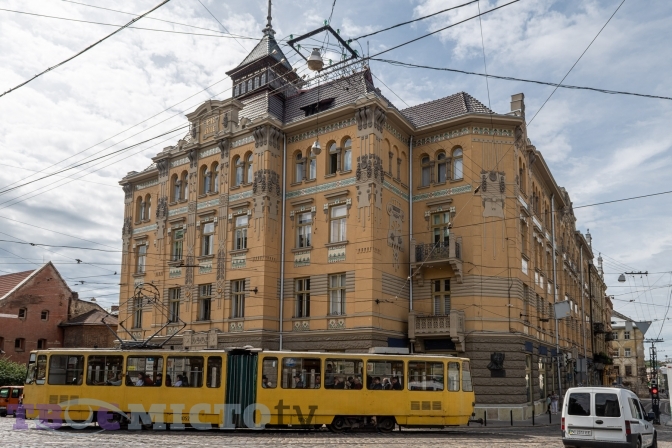
I also want to say about the tram on Ruska Street. There was a section where the oncoming trams could not separate because the rails overlapped, and I wondered why they were not separated.
Speaking of Ruska Street, one should also mention the Lyubomyrskyi Palace. Although its address is Rynok Square 10, the side facade occupies a large part of Ruska Street. The building of the 17th century is located on seven «plots», namely on the site of the Shymonovychivska and Torosevychivska tenements from Rynok Square, 3 buildings on the side of Ruska Street, and 2 buildings on Ivana Fedorova Street. There used to be a plot here that belonged to Prince Sapieha. In 1744, these areas were combined.
The tenement got its name thanks to Prince S. Lyubomyrskyi, who contributed to its reconstruction for his own residence in 1760. In 1772-1821, the administration of the Austrian governors of Galicia lived here. On October 1, 1895, the «Prosvita» Society, which at that time became the most powerful public association of Galician Ruthenians, purchased a house in Lviv at Rynok Square, 10. It housed branches of various Ukrainian societies and organizations (the editorial office of the newspaper «Dilo», the bookstore of the Taras Shevchenko Scientific Society (selling publications of the National Academy of Sciences, works of Ukrainian classics, translations of works of foreign literature into Ukrainian), the editorial office of the journal «Hromadskyi Holos»).
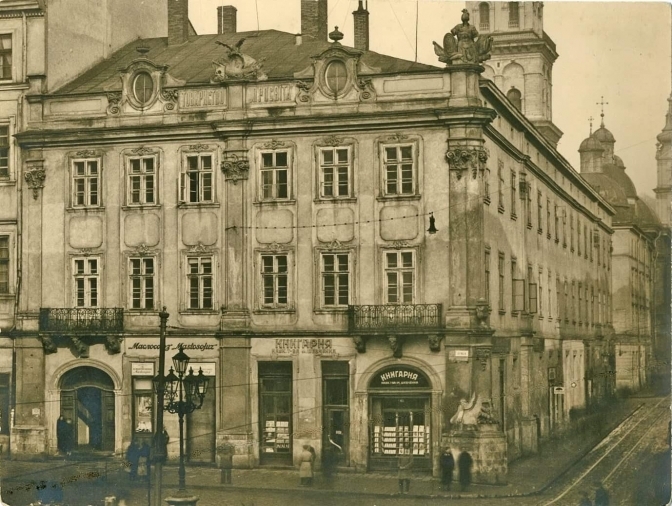
Tenement on Rynok Square, 10
It was from the balcony of this building in 1941 that Yaroslav Stetsko proclaimed the Act of Restoration of the Ukrainian State [after which he and his colleagues, including Stepan Bandera, were arrested by the Nazis].
The houses on the even side of Ruska Street are mostly still inhabited by Lviv residents. Tourists often ask me how expensive is the accommodation here. It’s difficult to give a definite answer, since two apartments next to each other can cost differently. These houses cannot be repaired, they must be restored, and this requires much more effort and money.
Human memory has interesting features. Minor details are often mentioned, and what was once important recedes into the background. However, memories are valuable because they reflect the subjective thoughts of each person.
By Petro Radkovets, translated by Vitalii Holich
Photo by Ivan Stanislavsky/Tvoe Misto and from open sources
The author’s column is a reflection of the author’s subjective position. The editors of «Tvoe Misto» do not always share the opinions expressed in the columns, and are ready to give those who disagree the opportunity for a reasoned answer.
Follow us on Facebook and Instagram. Lviv Now is an English-language website for Lviv, Ukraine’s «tech-friendly cultural hub.» It is produced by Tvoe Misto («Your City») media-hub, which also hosts regular problem-solving public forums to benefit the city and its people.












